Selling Your Cadillac? The Essential Guide to Warranty Transfer for New Owners
Selling a beloved Cadillac is an exciting milestone, whether you're upgrading to a newer model or moving on to a different chapter. Your Cadillac represents luxury, performance, and a legacy of American automotive excellence. As you prepare to pass the keys to its next fortunate owner, there's one crucial step that can significantly enhance its appeal and value: ensuring a smooth warranty transfer. Beyond just a transaction, transferring the warranty provides immense peace of mind for both you as the seller and the excited new owner. It’s a mark of quality, transparency, and confidence that can make your Cadillac stand out in a competitive market.
This detailed guide will walk you through everything you need to know about transferring your Cadillac's warranty. We'll explore why it matters, the types of warranties involved, the step-by-step process, and the invaluable benefits it offers to all parties. Get ready to turn your Cadillac sale into a truly seamless and satisfying experience!
Why Warranty Transfer is a Game-Changer for Your Cadillac Sale
When you're selling a premium vehicle like a Cadillac, potential buyers aren't just looking for style and performance; they're also seeking assurance and protection. A transferable warranty serves as a powerful testament to your vehicle's condition and your honesty as a seller. Imagine a buyer comparing two identical Cadillacs – one with an active, transferable warranty and one without. The choice becomes clear: the one offering continued protection against unexpected repairs will undoubtedly be more attractive.
For you, the seller, a transferable warranty can justify a higher asking price and often leads to a quicker sale. It builds immediate trust and reduces buyer hesitation, as they know they won't be immediately on the hook for major mechanical issues. For the new owner, it’s an invaluable layer of security, safeguarding their investment and offering peace of mind from day one. This shared benefit transforms a simple transaction into a win-win scenario, elevating the perceived value of your Cadillac significantly.
Understanding Cadillac Warranties: Types and Transferability
Cadillac offers several types of warranties, and understanding each one is key to a successful transfer. The primary warranties on a new Cadillac typically include the Bumper-to-Bumper Limited Warranty and the Powertrain Limited Warranty. These factory-backed warranties are usually tied to the vehicle identification number (VIN) and are generally transferable to subsequent owners, as long as the vehicle is within the coverage period (e.g., 4 years/50,000 miles for Bumper-to-Bumper, 6 years/70,000 miles for Powertrain on some models, though always confirm current terms).
Beyond the factory warranties, many Cadillac owners opt for Extended Protection Plans. These can be purchased through GM/Cadillac dealerships or third-party providers. While GM-backed extended warranties are often transferable, third-party plans vary greatly. It’s crucial to review the specific terms and conditions of any extended warranty you have to confirm its transferability and any associated fees or procedures. Always differentiate between what came from the factory and what was added later, as their transfer rules often differ.
The Step-by-Step Cadillac Warranty Transfer Process
Transferring your Cadillac's warranty doesn't have to be complicated, but it does require attention to detail. Here’s a general outline of the steps:
- Verify Transferability: First and foremost, confirm that your specific warranty is indeed transferable. Most factory warranties are, but always double-check the terms for your model year and any extended plans.
- Gather Necessary Documentation: You'll want to have all relevant paperwork on hand. This includes the vehicle's title, service records (a well-maintained car helps validate the warranty), the original warranty booklet, and any documentation related to an extended warranty plan.
- Contact Cadillac Customer Service or a Dealership: The most reliable way to initiate the transfer is by contacting Cadillac's customer service or visiting a local Cadillac dealership. They can provide the most accurate, up-to-date information and specific forms required for your situation.
- Complete Transfer Forms: Cadillac or GM might require specific forms to be filled out by both the current and new owner. These forms typically ask for vehicle information, owner details, and the date of sale.
- Pay Any Transfer Fees: Some warranties, especially extended plans, may involve a nominal transfer fee. Be prepared for this and factor it into your selling considerations.
- Ensure New Owner Registration: Confirm that the new owner's details are correctly registered with Cadillac to ensure future claims are processed smoothly. This step is critical for their peace of mind and your successful completion of the sale.
What Sellers Need to Know Before Listing Their Cadillac
Before you even place that 'For Sale' sign, a little preparation regarding your Cadillac's warranty can go a long way. Start by accurately determining the current status of your vehicle's warranty. This includes checking the exact expiration date and mileage limits for both the Bumper-to-Bumper and Powertrain coverages. You can often find this information in your owner's manual, on a service report, or by calling a Cadillac dealership with your VIN.
Equally important are meticulous service records. A warranty remains valid only if the vehicle has been properly maintained according to the manufacturer's schedule. Having a complete history of service not only demonstrates your diligence but also reinforces the vehicle's quality. Be transparent with potential buyers about the warranty's remaining duration and any specific exclusions. Clearly distinguish between factory warranties and any third-party extended contracts, as their transfer processes and coverage may differ significantly. Being upfront builds confidence and avoids misunderstandings down the road.
Benefits for Both Buyer and Seller: A Win-Win Scenario
A smooth warranty transfer isn't just a technicality; it's a strategic move that benefits everyone involved in the sale of your Cadillac.
- For the Seller:
Increased Resale Value: A transferable warranty is a powerful selling point that can justify a higher price, as it adds tangible value and security to the purchase.
Faster Sale: Buyers are more inclined to make a swift decision when they know their investment is protected, leading to less time on the market for your vehicle.
Enhanced Trust: Offering a transferable warranty demonstrates transparency and honesty, fostering a positive relationship with the buyer and making the transaction smoother.
Competitive Edge: In a crowded market, a Cadillac with an active, transferable warranty stands out against similar models that lack this crucial benefit.
- For the Buyer:
Peace of Mind: The most significant benefit is knowing they're protected from unforeseen repair costs, especially for major components, giving them confidence in their new acquisition.
Financial Security: A warranty acts as a financial safety net, safeguarding their investment and allowing them to enjoy their Cadillac without constant worry about potential expenses.
Confidence in Quality: A transferable warranty implies that the vehicle has been well-maintained and that the seller stands behind its condition.
Smoother Ownership Transition: They can focus on enjoying their new luxury ride, knowing that administrative details regarding protection have been handled efficiently.
Avoiding Potential Pitfalls in Warranty Transfer
While the process is generally straightforward, there are a few common pitfalls to be aware of to ensure a truly smooth transfer. Firstly, never assume a warranty is transferable; always verify its terms explicitly for your vehicle and specific plan. Some third-party extended warranties, for instance, might be non-transferable or have very strict conditions.
Missing or incomplete paperwork is another frequent issue. Keep all original warranty documents, service records, and purchase agreements meticulously organized. If these are scattered, it can delay or even prevent a successful transfer. Be mindful of any transfer fees; sometimes these are small, but they need to be budgeted for. Another crucial point is ensuring both parties are actively involved and informed. The new owner needs to understand their role in completing any necessary paperwork or contacting the dealership to finalize the transfer in their name.
Lastly, be aware that vehicles with salvage titles, significant aftermarket modifications that aren't factory-approved, or those that have been used for commercial purposes, might have their warranties voided or heavily restricted. Always disclose such information upfront.
Conclusion
Selling your Cadillac is more than just exchanging a vehicle for cash; it's about providing a valuable asset to its next owner. By taking the time to understand and facilitate the warranty transfer process, you're not just completing a transaction – you're enhancing your Cadillac’s resale value, building trust, and ensuring a positive experience for everyone involved. A transferable warranty transforms a good deal into a great one, offering unparalleled peace of mind and solidifying the reputation of your luxury vehicle. So, as you prepare to say farewell to your cherished Cadillac, make sure its future is as secure as its past, allowing the new owner to embark on their journey with confidence and satisfaction.
Where can I find my VIN?

Related Topics
- Is a Used GMC a Risk? The Peace of Mind of the Certified Pre-Owned (CPO) Warranty
- Is Off-Roading a Warranty Killer? Understanding Modifications and Exclusions on Your Jeep
- Is an Audi Extended Warranty Worth the Price? Analyzing the Cost vs. Coverage
- Electric Car Owners: Decoding the Nissan LEAF's 8-Year/100,000-Mile Battery Warranty

